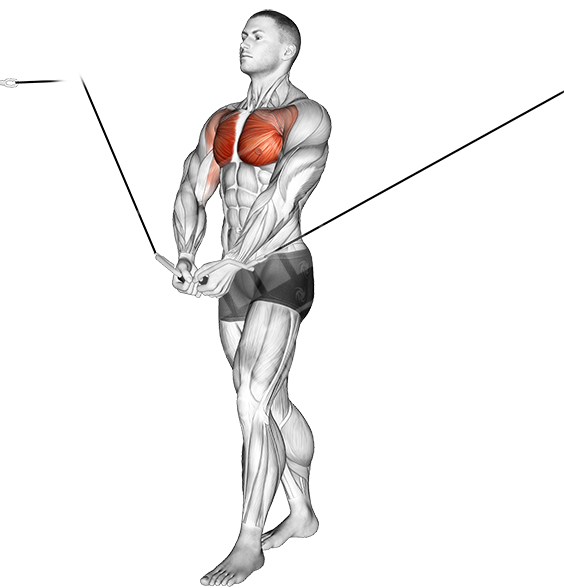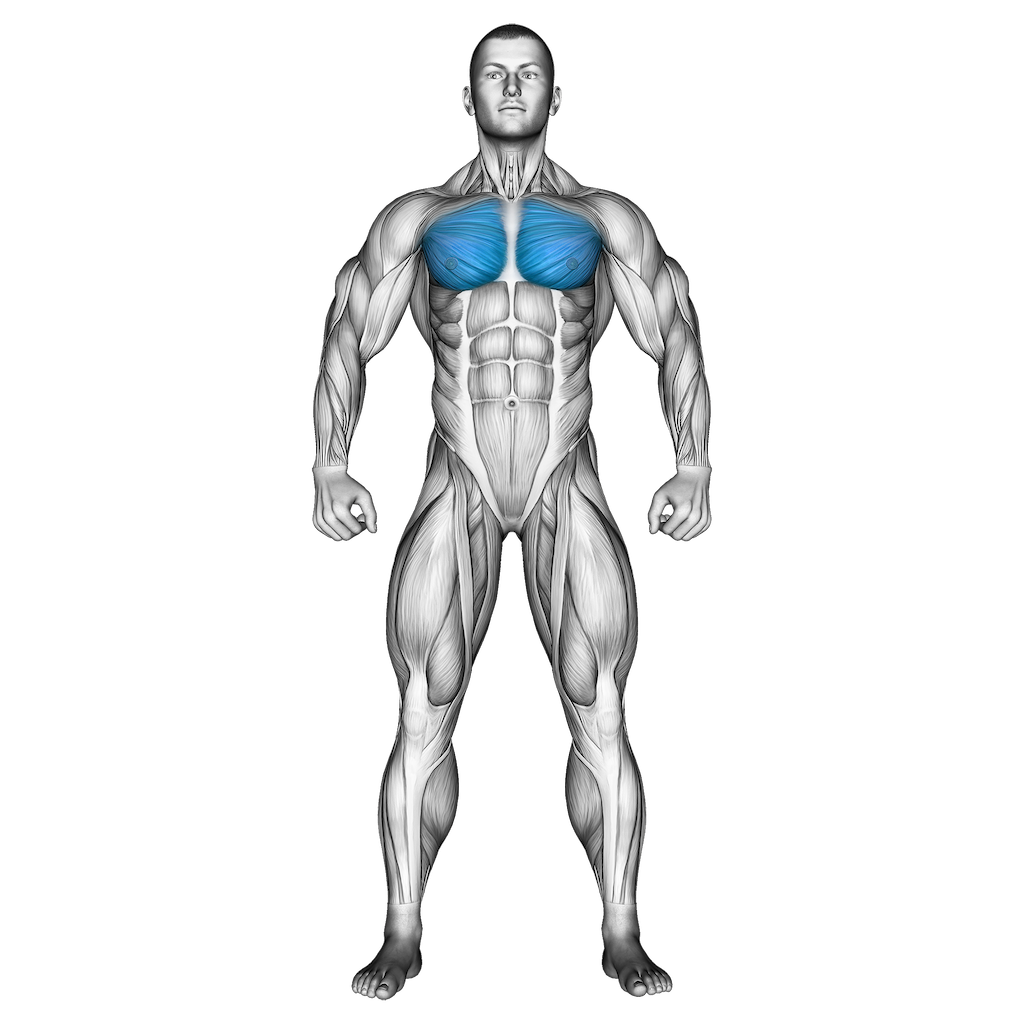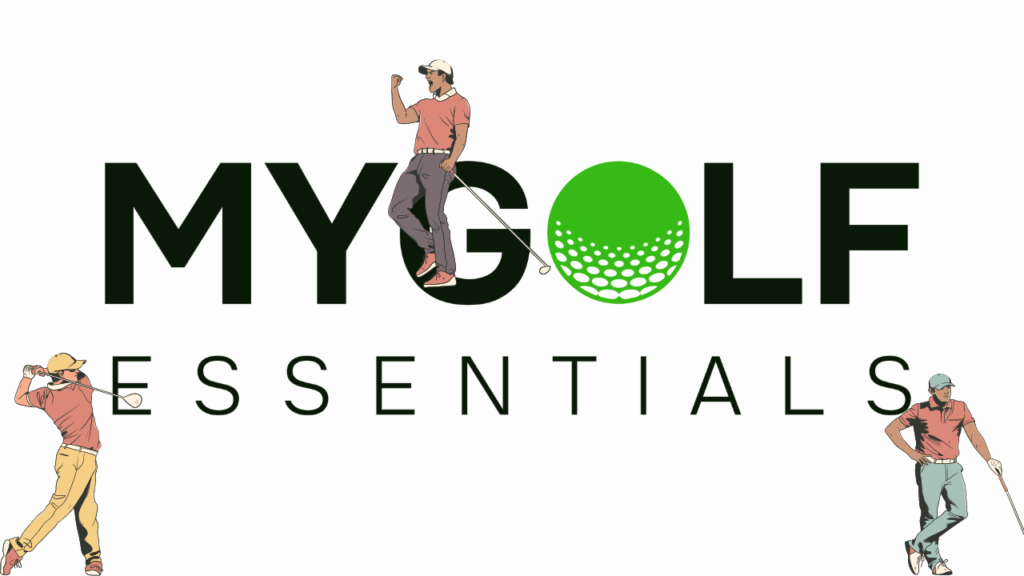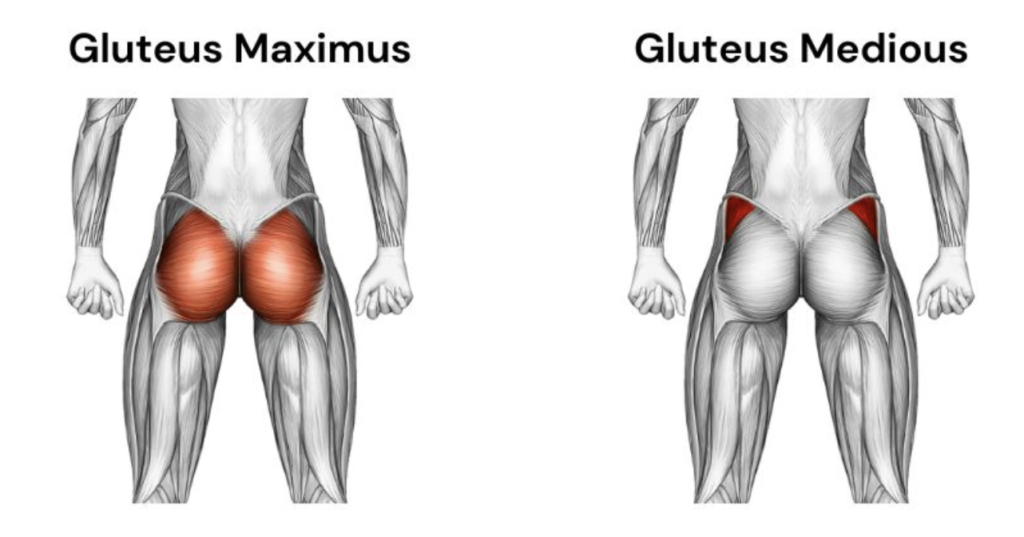
Are you looking for exercises to give your gluteus minimus a targeted workout? Are you struggling to find effective strengthening and toning techniques that target this particular muscle without wasting time or energy on ineffective methods? Look no further!
This blog post will discuss the best Gluteus Minimus Exercises to easily strengthen and tone these muscles. With these step-by-step instructions and detailed discussion of the biomechanics involved in each exercise, your glutes will be stronger than ever before!
What is the Gluteus Minimus
The Gluteus Minimus is the smallest and deepest of the three gluteal muscles beneath the Gluteus medius. This crucial yet often overlooked muscle plays a significant role in the stability and movement of the hip joint.
Its primary function is hip abduction, which means moving your leg away from the midline of your body. It also assists with the real rotation of the hip during walking or running, helping maintain balance and ensure smooth locomotion. Additionally, it plays a role in preventing hip adduction, or the inward movement of the leg towards the body’s midline.
In everyday activities, the gluteus minimus is engaged when you step to the side, cross one leg over the other, or even when you’re just standing, as it helps to stabilize the pelvis. The health and strength of this muscle are critical not just for athletes but for everyone.
Why strengthening the gluteus minimus muscle is important
Strengthening the gluteus minimus muscle hold has many fits for overall health and mobility. This muscle contributes significantly to the stability and functionality of the lower body, making it essential to many daily movements and activities.
Highly functional in activities such as walking, running, and standing, a strengthened gluteus minimus can enhance athletic performance while reducing the risk of injury. It helps maintain the balance of the pelvis while walking, running, or standing on one leg. A strong gluteus minimus thus aids in carrying out these movements more efficiently and with greater ease.
Moreover, strengthening this muscle can alleviate pain in the lower back, knees, and hips. This or an imbalanced gluteus minimus may lead to biomechanical inefficiencies, causing unnecessary strain on these areas.
Regularly performing exercises that target the gluteus minimus can also promote better posture. This muscle plays a role in keeping the hips level, which is crucial for maintaining spinal alignment and preventing postural issues.
Understanding the anatomy of the Gluteus Minimus
Before we dive into the best gluteus minimus exercises, let’s review its anatomy and biomechanics. It is helpful to understand how this muscle works so that you can better assess your body’s needs and tailor the exercises accordingly.
The gluteus minimus is one of three muscles that make up the buttocks, the others being the gluteus medius and gluteus maximus. It is the smallest of these three muscles, located deep in the buttocks underneath the gluteus medius. Anatomically speaking, it originates from a small portion of the outer surface of the ilium bone near the hip joint and inserts into a small area on the upper end of the greater trochanter of the femur.
Can you isolate your gluteus minimus?
Isolating and strengthening the gluteus minimus can be tricky, as it is impossible to directly target this muscle with a single exercise. Rather, you must train your body to engage the gluteus minimus in the context of various movements.
One way to achieve this is by incorporating exercises that work on hip abduction – moving your leg away from the midline of your body – into your training routine. This motion is essential for engaging the gluteus minimus, so focusing on exercises that involve it can help you to target and strengthen this muscle more effectively.
Exercises to Strengthen the Gluteus Minimus
Now that you better understand the gluteus minimus and how it works let’s look at the best exercises for strengthening this muscle.
Side Plank Hip Dips

Side plank hip dips are a great exercise to strengthen the gluteus minimus and tone up your hips. To perform this workout, lay on your right side and lift yours into a side plank position using your right hand underneath your shoulder. Make sure to keep a long line from the crown of your head to your feet, with the left foot placed atop the right foot without touching the ground.
Engage your oblique muscles to ensure that you feel stable in this position. Then, begin by exhaling and dipping your right hip towards the mat. With the engagement of these muscles, lift your left hip back into the air with a feeling as if a string is lifting it off the ground with ease.
This exercise helps to strengthen the gluteus minimus by engaging the hip abduction and stabilizing the pelvis while walking, running, or standing on one leg. This can enhance your athletic performance while reducing the risk of injury and relieving pain in the lower back, knees, and hips that may cause a weak or imbalanced gluteus minimus. Ca regularly performing this exercise also helps to improve posture, as it contributes to keeping the hips level and maintaining spinal alignment.
Box Step-ups With A Leg Lift
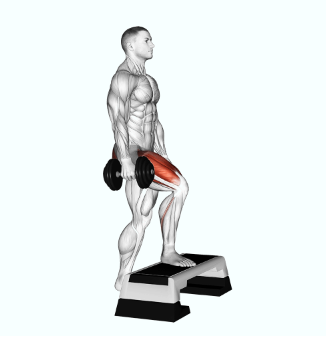
Step-ups can be a great way to get your gluteus minimus working. It’s an effective exercise that challenges this muscle’s strength and helps tone up your hips while improving athletic performance, reducing the risk of injury, and relieving pain in the lower back, knees, and hips. To take it up a notch, you can incorporate leg lifts into the equation for an extra challenge.
Start by finding a box that is not too easy but still suitable for you to step onto, or use stairs if no box is available. Begin the exercise by placing your right foot onto the box and lifting your left leg until it’s parallel to ground level, keeping it high at the apex as you lower down and step off the box with your right foot. Then switch sides by stepping onto the box with your left foot, raising your right leg to a parallel position against the ground until you’re feeling worn out.
This exercise greatly targets the gluteus minimus and improves balance, coordination, and stability. As you perform this exercise regularly over time, you will feel stronger and more balanced in daily activities and sports.
Curtsy Lunges
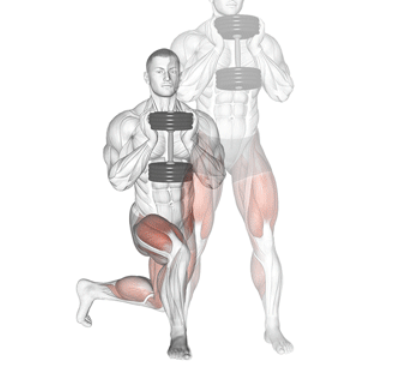
Curtsy lunges are an effective variation of the traditional lunge exercise that targtargets strengthen the gluteus minimus. To perform this workout correctly, start by standing with your feet hip-width apart and shifting most of your weight onto one foot while drawing the other backward and in line with that hip. The second foot should be shifted far enough away so that it’s behind and slightly to the left of the other foot. MakeKeepr hips facing forward throughout, avoiding rotating them outward as you lunge.
Lower your right knee to the ground before returning to a standing position and repeating on either side. This variation is great for strengthening not the gluteus minimus and the rest of the muscles in your lower body. Performing curtsy lunges regularly helps to improve muscle tone, balance, coordination, and stability while aiding in better posture and poetic performance.
Besides strengthening the gluteus minimus, this exercise helps to reduce pain in the lower back, knees, and hips that may weak or imbalanced gluteus minimus may cause can also reduce the risk of injury and enhance performance in various sports, as it helps to keep the hips level and maintain spinal alignment. With consistent practice, curtsy lunges can help you to achieve better hip stability and agility for daily activities and workouts.
Fire Hydrants
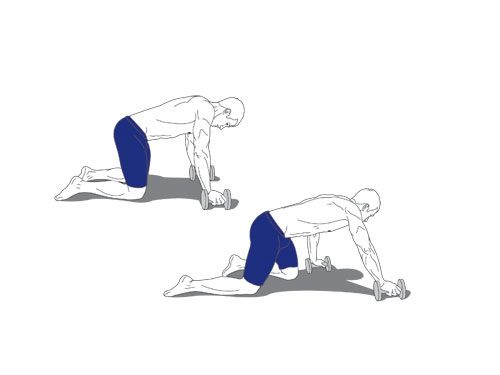
Fire hydrants are an excellent exercise to strengthen the gluteus minimus, commonly seen in Pilates classes. To perform this workout correctly, start by positioning your hands underneath your shoulders and your knees underneath your hips, with your spine perfectly horizontal to the floor. Then, take a deep breath and lift your right knee off the floor, using strength from your glute and hip muscles to generate the lifting motion.
Once the knee is lifted, hale and drop the knee back under the hip before repeating on the other side. Throughout this exercise, ensuring an uninterrupted horizontal position of your torso is important for optimal results. Doing so helps to target and strengthen the gluteus minimus while also working the other muscles in your lower body.
Regularly performing fire hydrants can help improve muscle tone, balance, coordination, and stability while aiding in better posture and athletic performance. It helps reduce pain in the lower back, knees,d hips that may be caused by a weak or imbalanced gluteus minimus, as well as reduce the risk of injury and enhance performance in various sports activities.
With consistent practice, fire hydrants can help you to achieve better hip stability and agility for daily activities and workouts. You may also find this exercise helpful in relieving pain or pressure in the hips when sitting for a long time due to weak muscles in the gluteus minimus. Plus, it contributes to keeping the hips level and maintaining spinal alignment, leading to better posture.
Side-lying Hip Abduction

Side-lying hip abduction is a great exercise for targeting and strengthening the gluteus minimus. To get started, lie down on your right side with your body in a single line when fully extended on the mat; rest your head on your right arm and lay your left arm atop the left side of your torso.
Once you are comfortable, begin the exercise by exhaling and lifting your top leg just a few inches off the bottom as you inhale to slowly bring it back to its starting position alongside the other leg. Throughout this movement, maintain a continuous line without any options or sudden breaks in form. It’s important not to raise each leg too much from the bottom one every time, ensuring that the exercise remains subtle yet effective.
PRegularly performing side-lying hip abduction helps improve muscle tone, balance, coordination, and stability while aiding in better posture and athletic performance. It reduces pain in the lower back, knees, and hips that may be caused by a weak or imbalanced gluteus minimus, reduces the risk of injury, and enhances performance in various sports.
With consistent practice, side-lying hip abduction machine can help you to achieve better hip stability and agility for daily activities and workouts. It also helps to p the hips level and maintain spinal alignment, leaimprovingsture over time. So include this exercise in your routine for an effective gluteus minimus workout.
Single-leg Squats

Single-leg squats are a great exercise to strengthen and target your glutes, quads, and core. Muscles To begin this workout, stand tall with your feet hip-width apart and extend one leg out front of you while keeping your torso upright. Then, slowly lower your body into a squat position by bending at the knee until your thigh is parallel to the floor.
It’s important to maintain balance and push through the heel of your standing leg as you rise back up to the starting position. To do this, ensure you engage your core and glutes in motorsport yourself throughout the exercise. Try pushing off with the front foot when necessary for an extra challenge.
Regularly performing single-leg squats can help you improve muscle tone, balance, coordination, and stability while aiding in better posture and athletic performance. It helps reduce pain in the lower back, knees, and hips that may be caused by a weak or imbalanced gluteus minimus, reducing the risk of injury and enhancing performance in various sports.
Deadlifts
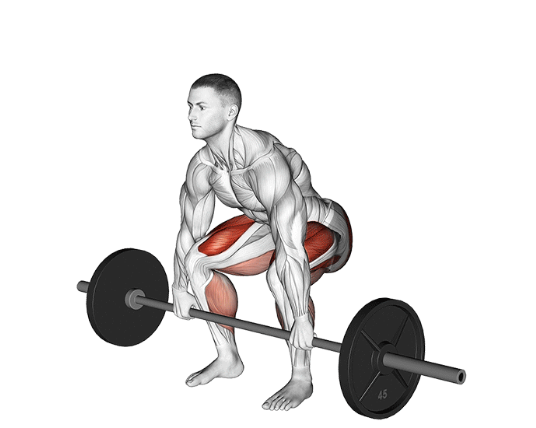
Deadlifts are a great workout to target and strengthen the gluteus minimus and other major muscles of the lower body,e, your hamstrings, and gluteus Maximus. To ensure safety when beginning this exercise or lifting a large amount of weight, it is recommended to have an experienced trainer or spotter nearby.
Firstly, position your feet at a comfortable shoulder width apart before placing the barbell in front of you. Squat down to grab the bar just outside your legs and stand up by extending both hips forward while keeping a firm grip on the weight with straight arms. Maintaining an engaged core and neutral spine throughout this lift is essential for optimal safety against possible back injuries.
Once you are in an upright position with your glutes contracted, gradually loosen that contraction and permit the bar to draw down your upper body. It is important to keep a consistent tempo throughout the movement to build strength while avoiding y motions. Focus on contracting your glutes as you lift and lower the weight for maximum performance.
Regularly performing deadlifts helps improve muscle tone, balance, coordination, and stability while aiding in better posture and athletic performance. It reduces pain in the lower back, knees, and hips that may be caused by a weak or imbalanced gluteus minimus, reduces the risk of injury, and enhances performance in various sports. WithConsistentctice will help you even better hip stability and agility for daily activities and workouts. It also helps keep the hips level and maintain spinal alignment, improving posture over time.
Glute Bridges
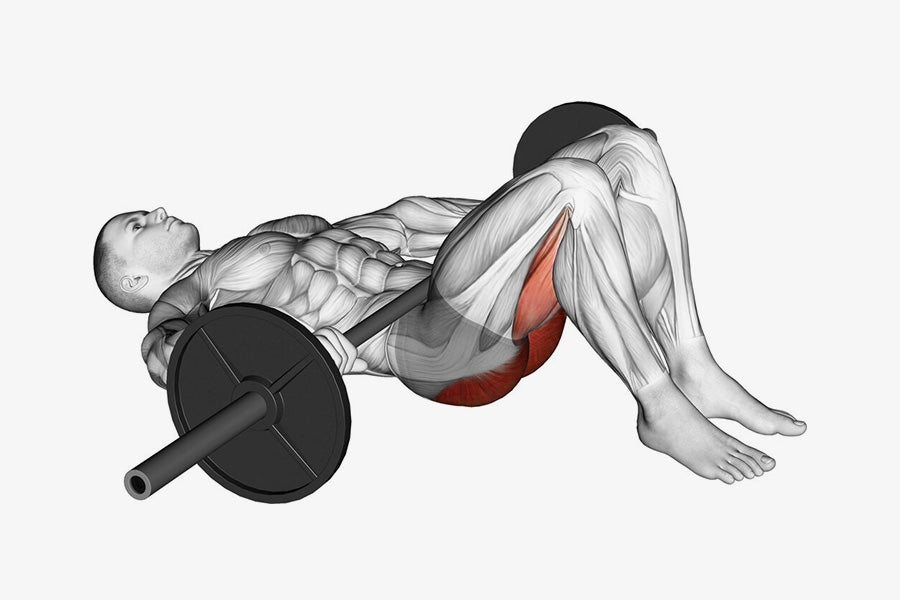
Glute bridges are an effective way to strengthen your glutes, hamstrings, and lower back. Muscles To do the hip abduction exercises correctly, begin by lying flat on your back with your feet hip-width apart and firmly planted on the floor. Engage your core as you slowly push through your heels and lift your hips ul they form a straight line with your shoulders and knees. When you get to the top of the bridge, cause for a few seconds to reel your glutes and hamstrings engage.
Then, gradually lower your hips back down until they reach the floor again. Ensure not to drop them to quarter to maximize muscle engagement throughout the entire range of motion. Once you have mastered the basic move, you can increase the challenge by adding weight to your hips as you bridge up and down.
By consistently practicing glute bridges, you will notice improvements in your hip muscles’ stability, strength, and flexibility in no time. With regular practice, you will also be able to improve your agility and posture for daily activities. Glute bridges are also great for reducing pain in the lower back, knees bent, and hips that a weak or imbalanced gluteus minimus may cause, reducing the risk of injury and enhancing performance in various sports. So make this exercise in your routine for an effective gluteus minimus workout.
Clamshells
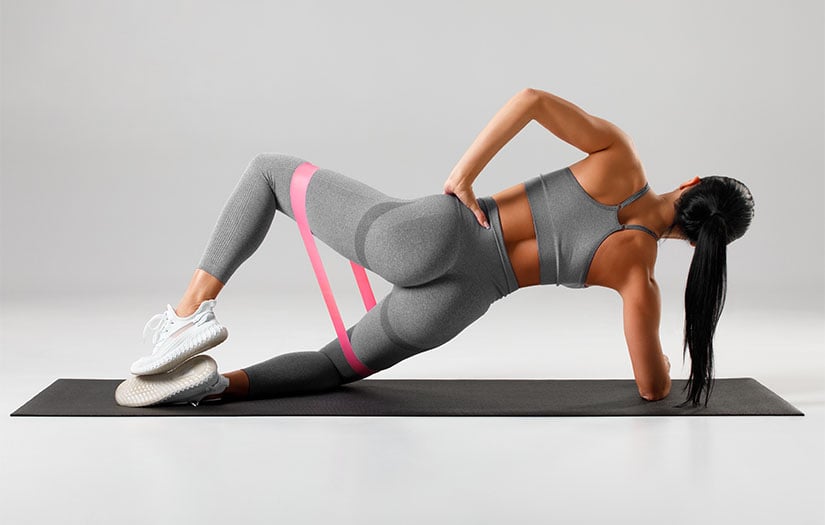
Clamshells are an effective exercise for improving the strength of your gluteus minimus hip abductor muscles. To start, lie on your right side with both legs outstretched and your feet in line with your hips so that your lower body creates a 90-degree angle in the air. MakKeepur’s upper body is straight and facing forward throughout the movement.
Lift your top leg to a level higher than the ground and above your hip, keeping the toes together, then open from the hip joint by raising the knee of its counterpart. Make sure to squeeze the glutes on the extended leg for maximum benefit. Do ten reps on each side for best results.
Clamshells improve muscle tone, balance, coordination, and stability while aiding in better posture and athletic performance. It helps reduce pain in the lower back, knees, and hips that may be caused by a weak or imbalanced gluteus minimus, reducing the risk of injury and enhancing performance in various sports. Regularly practicing this exercise can improve your hip stability and agility for daily activities and workouts. It also helps keep the hips level and maintain spinal alignment, improving posture over time.
Lateral Walks

Lateral walks with a loop or resistance band are effective lower-body exercises targeting the glutes and outer thigh muscles. Tie the loop or resistance band around your shins before taking a wide step to the right with your right foot. Make sure each step is wide enough so your feet end shoulder-width apart once you are done. Then, repeat this movement for ten steps before reversing direction using the same technique.
As you step, use your hands to hold a prayer position in front of you to help maintain balance and focus on contracting your glutes and outer thigh muscles with each step for better engagement. When it becomes too easy to complete (due to lack of resistance from the band), opt for one with more resistance or tighten the circle’s circumference around your shins.
Regularly practicing lateral walks can help improve glute muscles tone, balance, coordination, and stability while aiding in better posture and athletic performance. It also helps to reduce pain in the lower back, knees, and hips that may be caused by a weak or imbalanced gluteus minimus as well as reducing the risk of injury and enhancing performance in various sports.
FAQs
What are the benefits of strengthening my gluteus minimus?
Strengthening your gluteus minimus can provide significant benefits to the body, such as improving muscle tone, balance, coordination, and stability while aiding in better posture and improving athletic performance. It can also help reduce pain in the lower back, knees, and hips that may be caused by a weak or imbalanced gluteus minimus, reducing the risk of injury and enhancing performance in various sports.
How often should I do these exercises?
To maximize the benefits, aim to perform these gluteus minimus workouts thrice weekly Members to always take at least one day off between sessions to give their body time to rest and recover.
What type of equipment do I need?
You don’t need special equipment for glute bridges – just body weight tight will be sufficient. However, you will need a loop or resistance for clamshells and lateral walks. This can easily be purchased online from fitness stores.
Are there any modifications I can make to the exercises?
Yes, suppose you’re a beginner or find any of these gluteus minimus exercises too challenging. In that case, you can start by performing them without resistance and gradually increase the intensity as your muscles get stronger. You can also opt for modified versions of the movements li,ke sinsingle-legute bridges, and mini-clamshells, which are great for building strength and stability in the lower body.
What should I do if I experience pain or discomfort during these exercises?
Stop immediately and consult a medical expert if you experience any pain or discomfort while performing these exercises. It is important to listen to your body and not push it too hard. With regular practice, you should be able to progress gradually and safely as your muscles get stronger. If the pain persists, avoid performing the exercises until cleared by a medical professional.
Conclusion
In conclusion, strengthening your gluteus minimus is a great way to improve muscle tone, balance, coordination, and stability while aiding in better posture and athletic performance. Practicing glute bridges, clamshells,d lateral walks can help reduce pain in the lower back, knees,d hips that a wk or imbalanced gluteus minimus may cause, as well as reduce the risk of injury and enhance performance in various sports. Always consult a medical expert if you experience pain or discomfort during these exercises.

